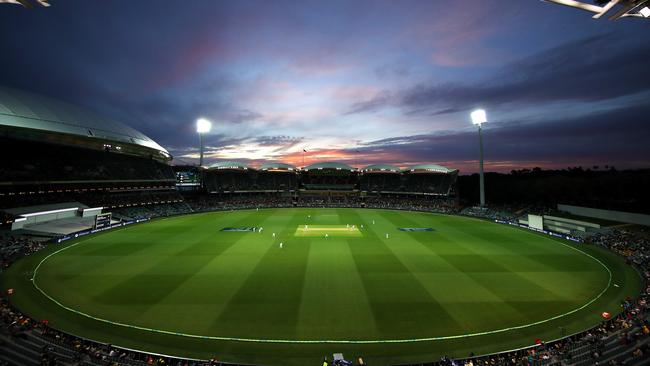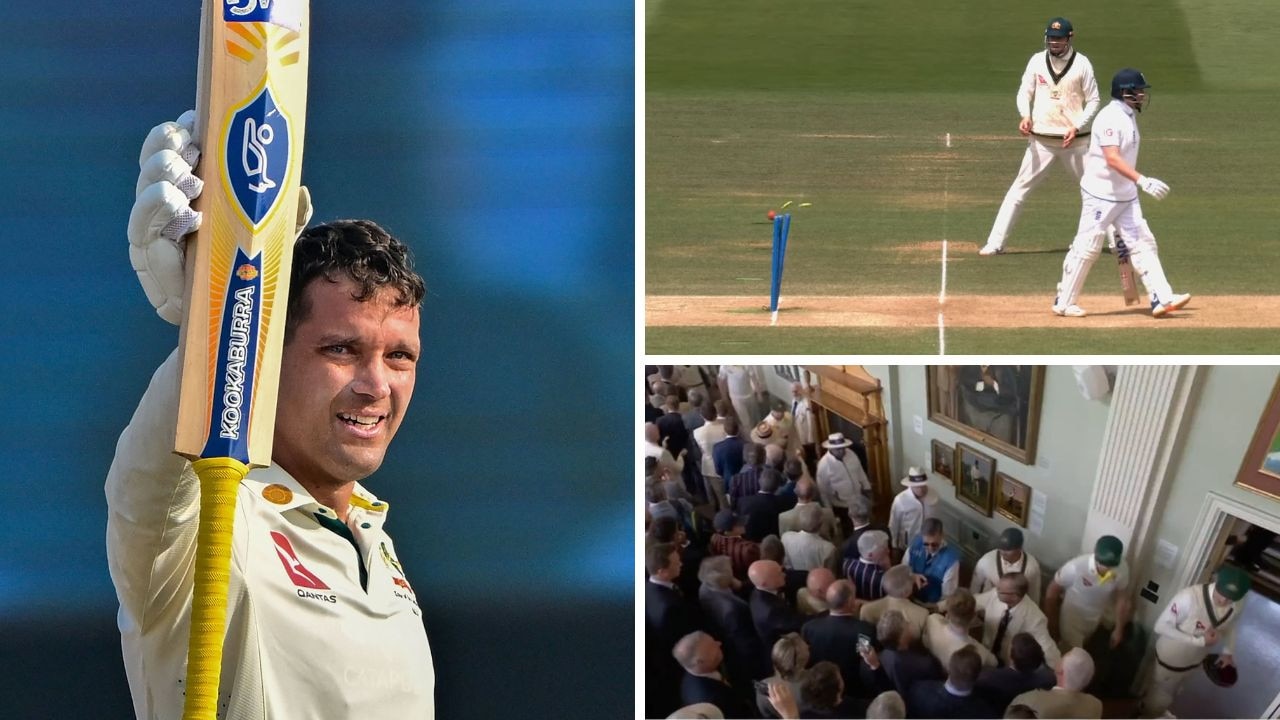T20 no rival to complex beauty of an Ashes Test
The Ashes is an outlier in a changed world, but the Test series still remains the supreme challenge in cricket.

It did not look like a form of the game in danger. It did not look like a form of the game shackled by tradition either, with the lights on and the pink ball wonderfully iridescent as it darted here and there.
There can be no doubt whatsoever that the fourth day of this Adelaide Test will linger long in the memory, especially its final floodlit session.
This was Test cricket at its very noblest, full of intrigue and unpredictability as England raged against the widely agreed script, always oozing with brooding intensity and sometimes spilling over into a little animosity, but, crucially, enacted mostly by the very best players in the world, with a Test tyro, Dawid Malan, desperately battling to demonstrate that he belonged.
Malan was thrown into some arena. For Joe Root as a batsman and the Australia bowling attack of Mitchell Starc, Josh Hazlewood, Pat Cummins and Nathan Lyon are performers that belong on the very highest stage, in this or any other era.
That Malan survived for as long as he did — nearly two hours for his 29 — will probably rank as one of his finest achievements. He can never have had his technique, temperament and ticker so unrelentingly and thoroughly examined. It was indeed the ultimate test.
This was Test cricket doing exactly what it says on the tin, and in doing so, reminding the cricketing world of its magisterial pre-eminence.
It was a day and night to put Twenty20 in its place. Yes, the shortest format has its place in the game, of course, and it is a very important place these days, but it is mostly pecuniary and to try to confer any cricketing comparison to what was on show yesterday (Tuesday) would be nonsensical; a misunderstanding of the beguiling beauty and compelling complexity of the longest format.
The last session was only a short chapter in a longer tale that has already taken in, among other things, contentious decisions about the toss and follow-on, a bowler on debut (Craig Overton) showing up his fellow batsmen with the willow, a previously successful batsman (Peter Handscomb) having his method exposed as almost comical and another batsman (Shaun Marsh) looking so cool in the last chance saloon that it seems remarkable he was there at all. And that is just in this match. Add on the backstory of the headbutt, or whatever it was, and the possibility of English wheels falling off after a crushing defeat in Brisbane and what a tome we have.

But then this is the Ashes. Are we really surprised that this series should produce such an enthralling day as this? Are we just stating the bleedin’ obvious when holding this up as an example of what Test cricket can provide?
We know the Ashes is different. We know it has remained mainly impervious to the problems that other Test matches and series face, even when there was the threat of overkill after back-to-back series were scheduled in 2013-14. Maybe we should realise and accept that this is an outlier and that other Test series have to operate by a different set of rules. The clock cannot be turned back. The decline of Test cricket in some parts of the world will simply not be rectified.
This is why we should cherish the Ashes ever more dearly. We have to concede that it is always going to be the outlier, the one Test series that will always be of five Tests’ duration and will always capture the imagination like no other.
It will also consist of Tests of five days. This Test does now highlight the folly of plans for four-day Tests, of course, but, really, it will only be folly if Ashes Tests are ever reduced.
They should not be, but that does not mean that four-day Tests are not sensible for other countries in other series. In many contests, four days will easily be sufficient time for a result. If it is done merely to free up time for more one-day cricket or Twenty20 that might produce revenue that Test cricket cannot, then so be it.
Change happens, and uniformity is not essential. Test matches have not always lasted five days. First-class matches vary in duration. Indeed I can recall playing County Championship seasons that consisted of a mixture of three-day and four-day matches.
Even if the Ashes does not necessarily need it, this Test, with record crowds, has also enhanced the claims of floodlit cricket. In warm countries — in other words, let’s not get too excited about doing it in England (one floodlit Test now and again is plenty) — it can work and can create interest that is not otherwise there.
Cricket is moving in turbulent times. Fitting three international formats into a schedule becoming ever more cramped by domestic Twenty20 leagues is its greatest challenge, but here was an emphatic and glowing endorsement of Test cricket’s claims to be slotted in first into that calendar.
The Times



To join the conversation, please log in. Don't have an account? Register
Join the conversation, you are commenting as Logout